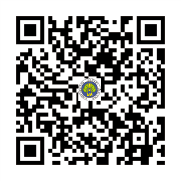Fraksisanasi dan distribusi keterikatan seng dalam sedimen Sendang Biru menggunakan metode BCR sonifikasi (The Bureau Community Of Reference)
DOI:
https://doi.org/10.17977/um067v2i2p95-99Keywords:
fraction, fraksinasi, distribution, distribusi, Zn analysis, analisis Zn, BCR sonification method, metode BCR sonifikasiAbstract
The density of anthropogenic activity in the port of blue fish leads to the contribution of heavy metals in sediments. The method of leaching is an important method to dissolve all zinc in the sediment precision and accuracy. Research on zinc levels in sediments has been widely practiced, but fractionation and distribution of zinc attachment in Blue Spring sediment using BCR Sonification. The results of the zinc analysis using BCR Sonification method gave precision value of 0.49 percent, and accuracy of 91.20 percent, the results showed that BCR method has high precision and accuracy value. The fractionation of zinc metal in the sediments shows that zinc is dominant in non-resistant (1) fractions comprising an ion exchange fraction, (2) carbonate bound fraction, (3) reduction fraction and (3) an oxidation fraction with a percentage of 10.16 percent; 23.52 percent; 21.25 percent. Whereas in the fraction resistant or residual fraction the concentration of zinc in the sediment was 45.07%. The distribution of zinc levels in sediments at nine locations in Sendang Biru ranged from 36.6 mg/kg - 239,78mg/ kg indicating that the Blue Sendang sediment was partly contaminated from anthropogenic because the zinc levels had exceeded the ereference of 120 mg/ kg.
Padatnya kegiatan antropogenik di pelabuhan ikan sendang biru menyebabkan adanya kontribusi seng dalam sedimen. Metode leaching merupakan metode yang penting untuk melarutkan semua seng dalam sedimen secara presisi dan akurasi. Penelitian kadar seng dalam sedimen telah banyak dilakukan, tetapi fraksinasi dan distribusi keterikatan seng dalam sedimen Sendang Biru menggunakan metode BCR Sonifikasi. Hasil penelitian analisis seng menggunakan metode BCR Sonifikasi memberikan nilai presisi sebesar 0,49 persen, dan akurasi sebesar 91,20 persen, hasil tersebut menunjukkan bahwa metode BCR memiliki nilai presisi dan akurasi yang tinggi. Fraksinasi logam seng dalam sedimen menunjukkan bahwa seng dominan pada fraksi non resisten yang terdiri dari fraksi (1) pertukaran ion, (2) fraksi terikat karbonat, (3) fraksi reduksi, dan (4) fraksi oksidasi dengan presentase sebesar 10,16 persen; 23,52 persen; 21,25 persen, sedangkan pada fraksi resisten atau fraksi residu konsentrasi seng dalam sedimen adalah 45,07 persen. Distribusi kadar seng dalam sedimen pada sembilan lokasi di Sendang Biru berkisar antara 36,6mg/kg – 239,78mg/kg. Hal ini menunjukkan bahwa sedimen Sendang Biru sebagian terkontaminasi dari antropogenik dengan kadar melebihi ambang batas yaitu sebesar 120 mg/kg.
References
Arain, M. B., Kazi, T. G., Jamali, M. K., Jalbani, N., Afridi, H. I., & Baig, J. A. (2008). Speciation of heavy metals in sediment by conventional, ultrasound and microwave assisted single extraction methods: a comparison with modified sequential extraction procedure. Journal of hazardous materials, 154(1-3), 998-1006.
Horwitz, W. (2002). AOAC guidelines for single laboratory validation of chemical methods for dietary supplements and botanicals. Gaithersburg, MD, USA: AOAC International, 12-9.
Bernhard, M., Brinkman, F. E., & Sadler, P. J. (1998). The importance of chemical speciation in environmental process. Paper in Dahlem Konferenzen, Berlin, 2-7 September
Burton, E. D., Phillips, I. R., & Hawker, D. W. (2006). Factors controlling the geochemical partitioning of trace metals in estuarine sediments. Soil and Sediment Contamination: An International Journal, 15(3), 253-276.
Christian, D.G. (1994). Analitical chemistry. New York: John Wiley and Sons Inc.
Davidson, C. M., Thomas, R. P., McVey, S. E., Perala, R., Littlejohn, D., & Ure, A. M. (1994). Evaluation of a sequential extraction procedure for the speciation of heavy metals in sediments. Analytica Chimica Acta, 291(3), 277-286.
El-Mansy, N. (2013). Solid-liquid extraction. Chemical Engineering Department, Cairo University.
Filgueiras, A. V., Lavilla, I., & Bendicho, C. (2002). Chemical sequential extraction for metal partitioning in environmental solid samples. Journal of Environmental Monitoring, 4(6), 823-857.
Kennedy, V. H., Sanchez, A. L., Oughton, D. H., & Rowland, A. P. (1997). Use of single and sequential chemical extractants to assess radionuclide and heavy metal availability from soils for root uptake. Analyst, 122(8), 89R-100R.
Mulyaningsih, T. R., AlFian, A., & Sutisna, S. (2012). Distribusi Logam Berat Dalam Sedimen Daerah Aliran Sungai Ciujung Banten. Jurnal Teknologi Reaktor Nuklir Tri Dasa Mega, 14(3), 157-169.
Palar, H. (2004). Pencemaran dan Toksisitas Logam Berat. Jakarta: Rineka Cipta.
de Andrade Passos, E., Alves, J. C., dos Santos, I. S., Jose do Patrocínio, H. A., Garcia, C. A. B., & Costa, A. C. S. (2010). Assessment of trace metals contamination in estuarine sediments using a sequential extraction technique and principal component analysis. Microchemical Journal, 96(1), 50-57.
Pueyo, M., Rauret, G., Lück, D., Yli-Halla, M., Muntau, H., Quevauviller, P., & López-Sánchez, J. F. (2001). Certification of the extractable contents of Cd, Cr, Cu, Ni, Pb and Zn in a freshwater sediment following a collaboratively tested and optimised three-step sequential extraction procedure. Journal of Environmental Monitoring, 3(2), 243-250.



1.png)
4.png)









